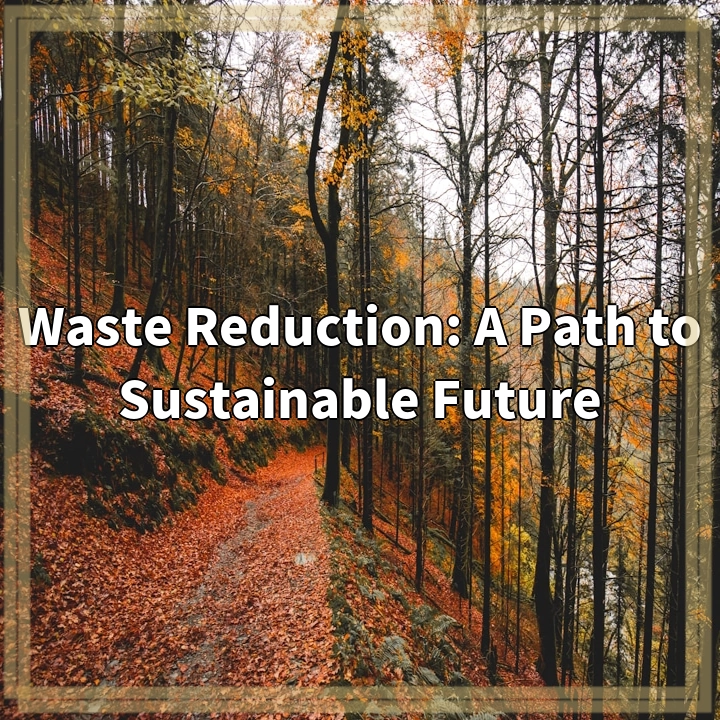
What is Waste Reduction?
Waste reduction, also known as waste minimization or waste prevention, is a crucial component of sustainable waste management. It involves implementing strategies and initiatives to reduce the amount and impact of waste generated in various sectors of society.
Real-World Problems Associated with Waste Reduction
While waste reduction is a worthy goal, it is not without its challenges and obstacles. Here are some of the real-world problems that are often encountered:
1. Lack of Awareness and Education
Oftentimes, individuals, communities, and businesses are not fully aware of the benefits and methods of waste reduction. This lack of awareness can hinder the adoption of waste reduction practices and lead to continued wasteful behaviors.
2. Consumer Culture and Overconsumption
In many societies, there is a pervasive consumer culture that encourages excessive and unnecessary consumption. This leads to the production of more waste and makes waste reduction efforts more challenging.
3. Infrastructure and Resource Limitations
Implementing effective waste reduction strategies often requires adequate infrastructure and resources. However, many regions, especially in developing countries, lack the necessary systems and facilities to support efficient waste management practices.
4. Economic Constraints
Waste reduction initiatives may require upfront investments in new technologies or infrastructure, and this can pose financial challenges for individuals, businesses, and governments. Without financial support, it becomes difficult to fund and sustain waste reduction efforts.
5. Behavioral and Attitude Barriers
Changing long-standing habits and attitudes towards waste can be challenging. Individuals may resist adopting waste reduction practices due to convenience, lack of motivation, or skepticism about the effectiveness of such efforts.
6. Complex Supply Chains
In today’s globalized world, products often go through complex supply chains with multiple stakeholders involved. This makes it difficult to trace the full lifecycle of products and implement waste reduction measures at each stage effectively.
While these real-world problems pose significant challenges, they should not deter us from pursuing waste reduction. By addressing these obstacles through education, policy changes, and sustainable practices, we can overcome these challenges and pave the way towards a more sustainable future.

Solutions for Waste Reduction
While waste reduction poses challenges, there are several solutions that can be implemented to overcome these obstacles and promote a sustainable future:
1. Education and Awareness Programs
Investing in education and awareness programs can help individuals, communities, and businesses understand the importance of waste reduction. By providing information about the benefits and methods, people can make more informed choices and actively participate in waste reduction efforts. These programs can be conducted through schools, community centers, and various media channels.
2. Promoting Sustainable Consumption
Shifting towards a culture of sustainable consumption can have a significant impact on waste reduction. Encouraging individuals to make mindful choices, such as buying products with less packaging, repairing and repurposing items, and supporting companies with eco-friendly practices, can greatly reduce waste generation.
3. Building Robust Waste Management Infrastructure
To effectively reduce waste, it is essential to have proper waste management infrastructure in place. This includes establishing recycling facilities, composting systems, and waste-to-energy plants. Governments and organizations should invest in developing this infrastructure and ensure its accessibility to all communities.
4. Creating Incentives and Regulations
Governments can play a crucial role in waste reduction by implementing regulations and providing incentives. This can include imposing taxes or fees on single-use plastics, offering tax subsidies for businesses implementing waste reduction measures, and enforcing stricter recycling policies. By creating a supportive legal and economic framework, waste reduction can be encouraged at both individual and organizational levels.
5. Encouraging Collaboration and Partnerships
Addressing waste reduction requires collective efforts from various stakeholders, including individuals, businesses, governments, and non-profit organizations. Collaboration and partnerships can foster innovation, share best practices, and allocate resources effectively to achieve common waste reduction goals.
6. Research and Innovation
Investing in research and development of new technologies and approaches can significantly contribute to waste reduction efforts. This includes exploring alternative materials, improving recycling processes, and adopting circular economy principles. By embracing innovation, we can find more sustainable solutions to reduce waste generation and promote resource conservation.
By implementing these solutions, we can overcome the real-world problems associated with waste reduction and move towards a more sustainable future. Each of us can play a part in reducing waste and striving for a cleaner and healthier planet.















